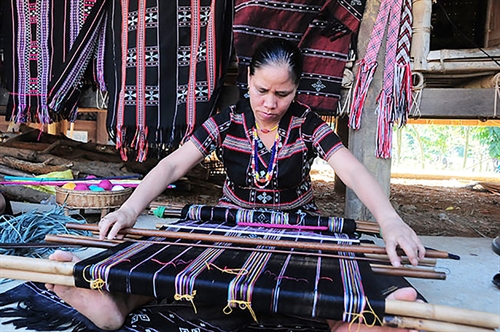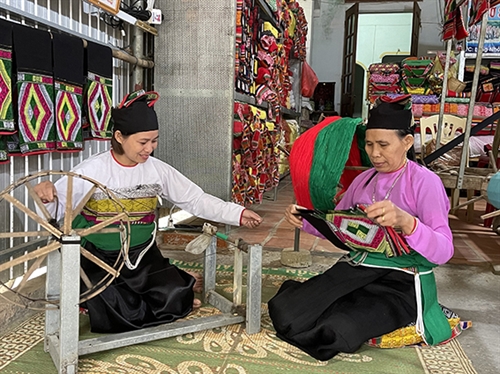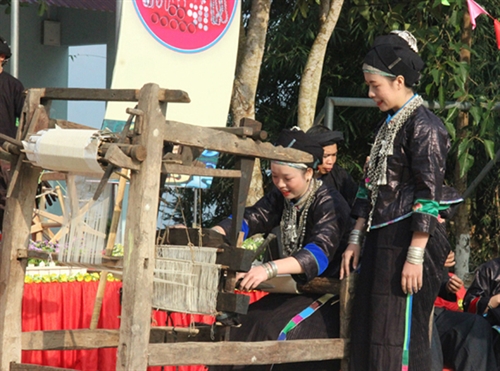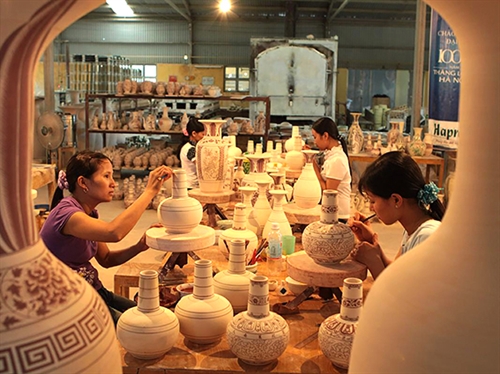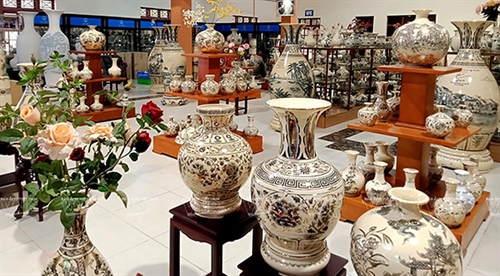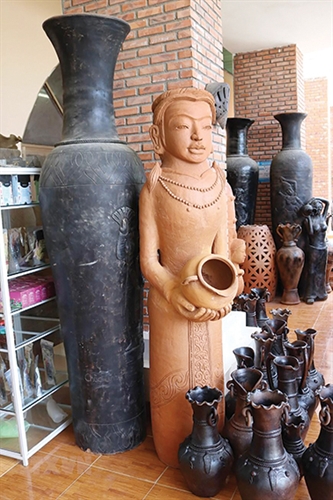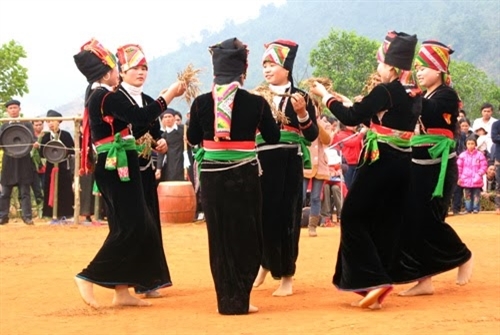TO DONG HAI
Located in a tropical and subtropical region with a lot of sunshine and rain, and four distinctive seasons in the year: Spring, Summer, Autumn and Winter, Vietnam is home to a great variety of species of flowers. Since time immemorial, flowers have occupied a special position in the cultural life of the Vietnamese. They have appeared in poetry, music, songs, paintings, architectures and particularly in behavioral culture. Vietnamese are so fond of flowers that they often compare them with the fair sex. Many Vietnamese girls were named after flowers such as Lan (Orchid); Mai (Apricot); Dao (Peach); Hong (Rose); Cuc (Chrysanthemum); Quynh (Phyllocactus); Tra (Camellia); etc. Moreover, the Vietnamese often ascribe human characters to flowers, depending on their colors, fragrance and features.
The lotus is the symbol of nobleness because of its mild fragrance, its portly appearance and elegant color, the harmony between its petals and stamen. It has gone into this old folk song:
“In the pond, nothing is more beautiful than lotus
The green leaf, the gorgeous blossom sprinkled with yellow pistils.
Yellow pistils, white blossom and green leaf,
It has no odor of mud though living near the mud.”
In fact, “it does not have the odor of mud though living near the mud” has long become the moral code of the Vietnamese. The lotus is well adapted to the different climates of the three regions (north, central and south) of Vietnam. In Dong Thap Muoi (The Plain of Reeds), it grows so thickly in summer that you have to fend your way through the lotus plants if you travel by boat. Rising above the water surface are white and pink lotuses. You can enjoy the mild scent sent out by the lotuses and feel relaxed. Perhaps because of this the lotus has become a symbol of Buddhism. The one‑pillar pagoda in Hanoi, well-known for its particular architecture is shaped as a lotus blossoming above the water. Moreover, people often use lotus pistils to scent tea and lotus seeds and roots, as a tranquilizer.
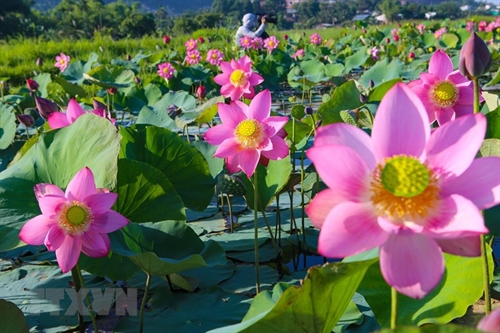 |
| The lotus is the symbol of nobleness because of its mild fragrance__Photo: Internet |
Meanwhile, the chrysanthemum represents longevity. Its flowers are often used as a present to aged people to wish them a long life. They can also be used for decoration on festive days. Probably, chrysanthemum was introduced into Vietnam from China and Japan, and have long been accepted and hybridized by Vietnamese. It is said that flowers of this kind were first grown in the flower‑growing village of Ngoc Ha, Hanoi. The chrysanthemum in Vietnam is rich in variety with many better known species such as the Tagetes, Marguerite, Immortelle, Chinaaster. The lustrous yellow Chinaaster is a large flower with long pistils; the Daisy has long and soft pistils.
Chrysanthemum is also used to scent tea or make wine, and as a medicine for such diseases as headache and dizziness. It is regarded by Vietnamese as one of the four kinds of precious flowers.
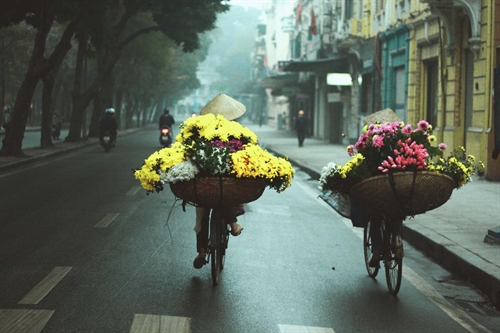 |
| The chrysanthemum represents longevity__Photo: Internet |
Spring would mean little to people in northern Vietnam if there is no peach flower, a native variety. It blossoms at the time of Tet (Vietnam`s traditional lunar new year festival). As is the custom, every Vietnamese family, rich or poor, has to get a branch of peach blossoms in the house. From time immemorial, the flower‑growing village of Nhat Tan in Hanoi has been known for its many kinds of peach flowers: dark purple, pink, bonsai peach, etc. In the northern mountainous regions, the peach trees grow naturally into forests, giving the Spring a beautiful scape. After defeating the feudal Chinese invadors of the Ming empire in the well‑known battle of Dong Da in the Spring of Ky Dau (1789), Quang Trung sent an emissary to Phu Xuan, southern Vietnam, carrying a blossom of peach flowers as gift to his wife, Princess Ngoc Han.
If the peach flower is a symbol of Tet and of the Spring in the North, the yellow apricot flower represents the Spring and Tet in the South. The apricot flower is considered by ancient people to be the symbol of nobleness of the soul. Many Vietnamese girls are named “Mai” (Apricot). Poet Cao Ba Quat (19th century) once wrote: “In my whole life, I only kowtow before the apricot flower.”
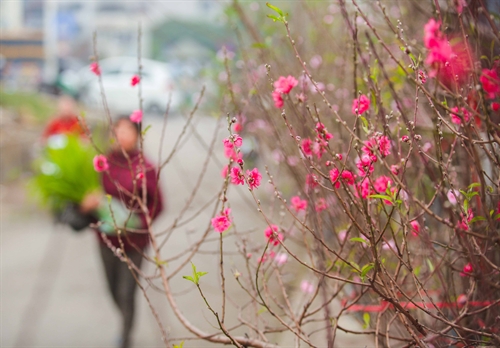 |
| The peach flower is a symbol of Tet and of the Spring in the North__Photo: Internet |
Besides the yellow apricot, the white apricot is also grown in Vietnam.
Unlike all others, the rose, which was imported into Vietnam not long ago, has become very popular to the Vietnamese. Roses are mostly offered in weddings and birth anniversaries. Roses vary in colors: white, pink, red, velvety red, yellow and most recently a black species has been crossbred. In Vietnam, roses are grown almost everywhere. Yet, perhaps rose of special and precious kinds can be grown only in Da Lat, Central Highlands, where the climate is temporate.
Recently, orchids have become a new passion of flower‑lovers in Vietnam. There are more than 500 kinds of orchids in the country. Found in the Cuc Phuong National Park among other kinds is “the Fairy's Heel” orchid with pink petals with purple dots. Along the Truong Son mountain range, orchids of different species are seen growing on big trees.
Orchids lovers must tend the plants very minutiously, having to change the soil every year and wash the roots if they want their orchids to have many blossoms. For the “water fairy”, which thrives in water, they must know how to care the tuber if they want to time the budding and flowering. The happiest moment for them is to watch the flower blossom right on the New Year Eve and emit a mild fragrance as they sip hot tea with a circle of old friends.
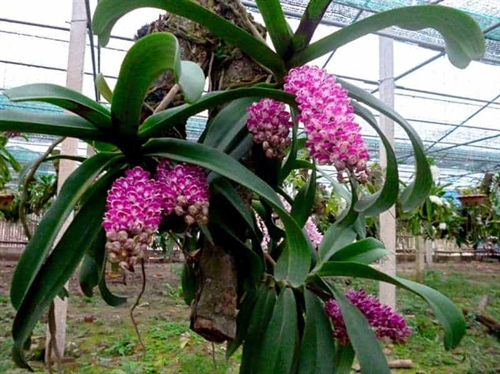 |
| Orchids have recently become a new passion of flower‑lovers in Vietnam__Photo: Internet |
The flowers are often given human attributes. Jasmine, phyllocactus, hyacinth, which blossom at night, are often considered “flirtatious” flowers and never put on altars for worship. Meanwhile the cillions and chinaasters are regarded as refined and noble as virtuous girls and straight forward gentlemen. The lotus represents sagesse.
Flowers are planted not just for their beauty or fragrance. They carry with them concepts and even philosophies, the outlook on life, the universe, or a way of living.

